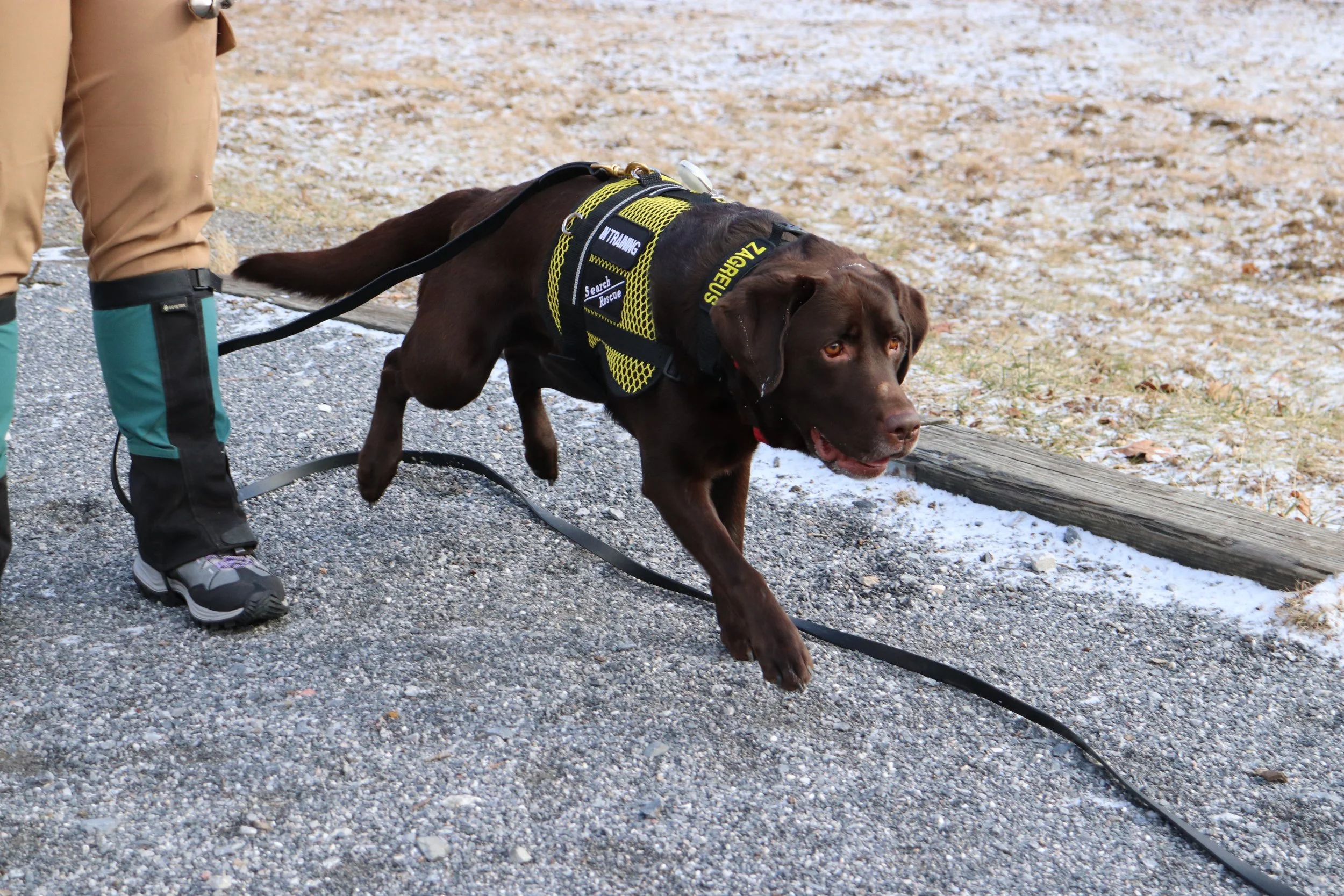
Our Mission
We are an all-volunteer, non-profit organization available for search and rescue operations 365 days out of the year. Our members are professionally trained and certified by the National Association for Search and Rescue (NASAR) to work with authorized agencies in Maryland and surrounding areas.
Western Maryland K-9 Search and Rescue is equipped with, and currently training, Air Scent Dog Teams to assist with lost person searches in wilderness and urban interface environments. We follow criteria equivalent to FEMA Type II Wilderness Air Scent Team capabilities. We also have teammates that are certified in Human Remains Detection (HRD). The team can be self-sustaining for 48 hours in all weather conditions and low angle wilderness terrain or larger areas of 120 acres or more. We can also provide assistance with searching in a disaster environment, such as the outlying areas of a tornado zone.
Our K-9 Partner’s Role:
Dog teams have a very special role in the world of search and rescue. The dogs’ ultra-sensitive hearing, night vision, endurance and keen sense of smell have continually proven to be invaluable in the effort to locate missing persons. Because of their extraordinary abilities, dogs are often able to reduce the time spent searching, thereby increasing the chances that the missing persons will be found alive. A search dog’s success stems from the fact that every human being has a smell—not detectable by human beings, but discernible by animals—caused by the constant stream of skin rafts and bacteria shedding from the human body. How the scent is “picked up” by the dogs, depends upon the training they have had in trailing or air scenting techniques. In both cases, the search dogs are able to locate missing persons even if they are hidden from view. Experts estimate that a single dog team can be as effective as 20 to 30 trained human searchers in locating a missing person in a given period of time.
Types of Search Dogs:
The Air Scent dog is probably the most frequently encountered SAR dog. Every human releases microscopic scent particles called “rafts” into the air. The dog’s sense of smell is about 40 times more sensitive than a human’s. The rafts form a scent cone that the dog can follow, and ultimately find the missing person.
Some dogs are trained to search by picking up a scent in the air, an Air-scent dog, while others will follow a track of a particular person after smelling a personal item, a Trailing dog. There are different training techniques depending on the job you want your dog to do.
On a call where a dead body may be the outcome, a Cadaver dog may be used. A Cadaver or HRD (Human Remains Detection) K9 will pick up the scent of decomposing tissue as it rises to the surface of the ground.
Sometimes the victim is in a body of water, and can’t be seen. A Water Search dog would be most suitable for this task. The dog will be able to pick up the victim’s scent as it rises to the top of the water, and is dispersed by the air above.



